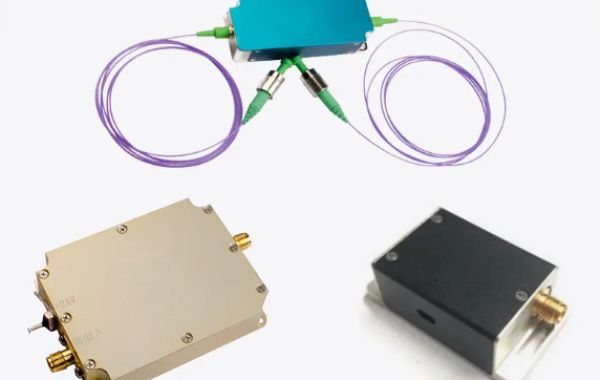When selecting a fiber-coupled Acousto-Optic Modulator (AOM), several key factors need careful consideration to ensure optimal performance and compatibility with your specific application. Here are some of the most important considerations:
Center Wavelength:
- Compatibility:The AOM's center wavelength must align precisely with the wavelength of your laser source. Mismatch can lead to reduced diffraction efficiency and increased insertion loss.
- Wavelength Range:Determine the operating wavelength range required for your application. Some AOMs have broader wavelength ranges than others.
Acousto-Optic Material:
- Diffraction Efficiency:The choice of material significantly impacts diffraction efficiency. Materials like TeO2 (Tellurium Dioxide) are known for high efficiency, while others may offer different trade-offs between efficiency, bandwidth, and cost.
- Optical Damage Threshold:Ensure the material can withstand the optical power levels of your laser source without damage.
RF Drive Frequency:
- Application Requirements:The required RF drive frequency depends on the desired frequency shift or modulation bandwidth.
- Driver Compatibility:Select an AOM with an RF drive frequency compatible with available drivers and your system's electronics.
Bandwidth:
- Modulation Speed:The AOM's bandwidth determines the maximum speed at which you can modulate the laser beam. Higher bandwidths are essential for high-speed applications.
- Application Needs:Choose a bandwidth that meets the specific requirements of your application, such as pulse shaping or high-speed switching.
Insertion Loss:
- Optical Power Budget:Minimize insertion loss to maintain sufficient optical power throughout your system.
- Sensitivity:Lower insertion loss is crucial for applications with low optical power levels.
Extinction Ratio:
- Contrast:In applications requiring high contrast between the "on" and "off" states, a high extinction ratio is essential.
- Signal Quality:A high extinction ratio minimizes unwanted background light.
Polarization Sensitivity:
- Preservation:If polarization preservation is critical (e.g., in interferometry), choose an AOM with minimal polarization-dependent loss.
- Application Requirements:Assess whether polarization sensitivity will significantly impact your application's performance.
Environmental Considerations:
- Temperature Stability:Consider the temperature stability of the AOM and its impact on performance.
- Environmental Factors:Evaluate the AOM's robustness to environmental factors such as vibration and shock.
Size and Packaging:
- Integration:Choose an AOM with a size and packaging that are compatible with your system's space constraints.
- Ease of Integration:Consider factors like fiber pigtails, connectors, and mounting options for easy integration.
Cost:
- Budget:Balance performance requirements with budget constraints.
- Value:Evaluate the overall value proposition, considering performance, reliability, and long-term costs.







